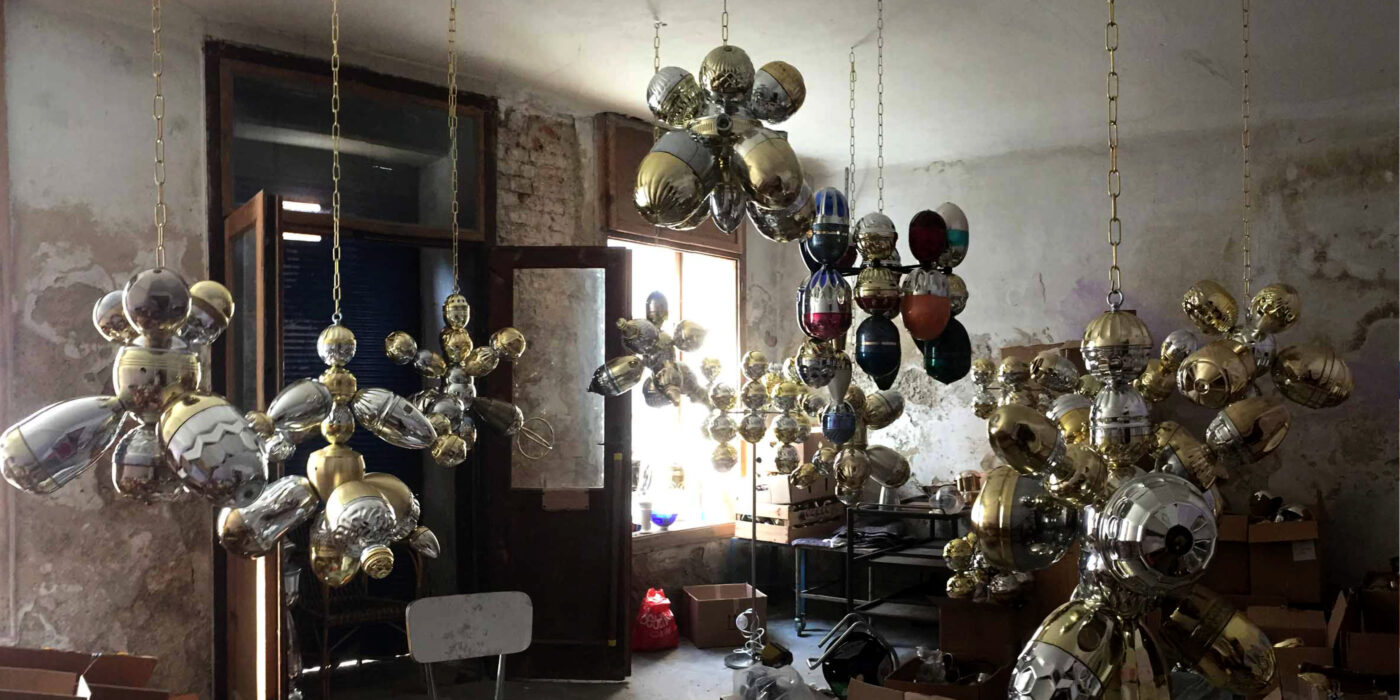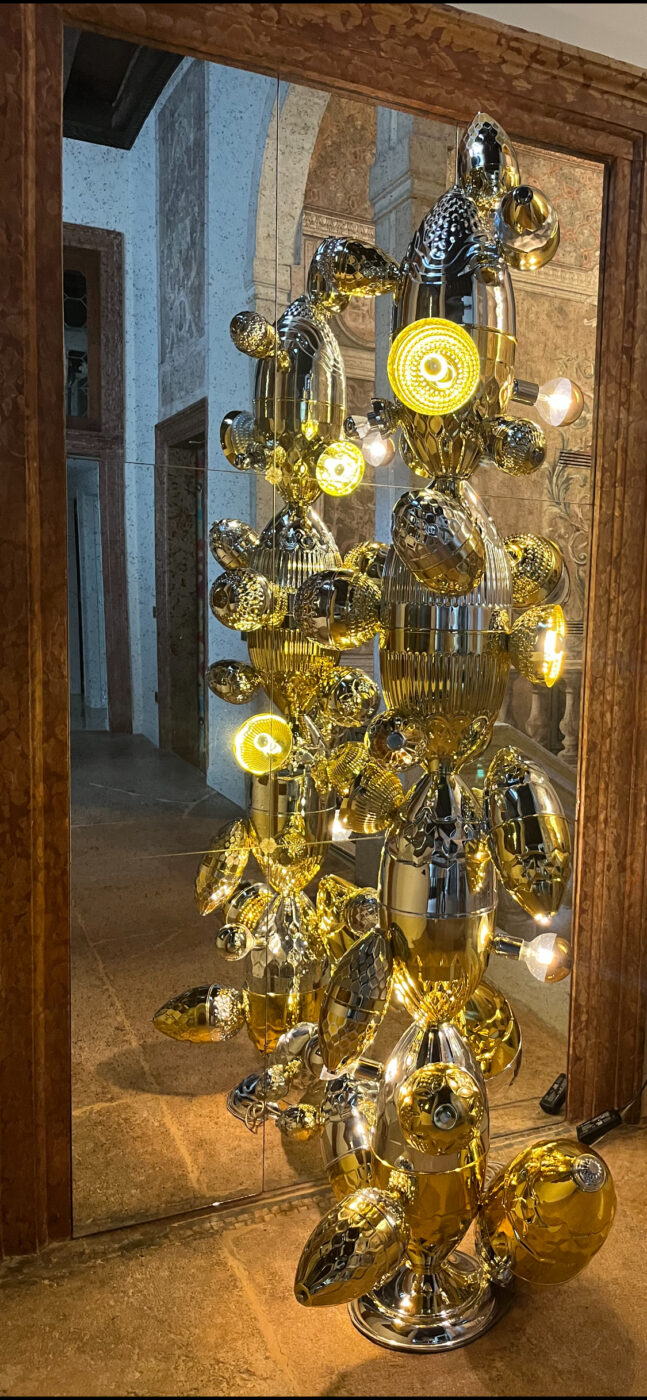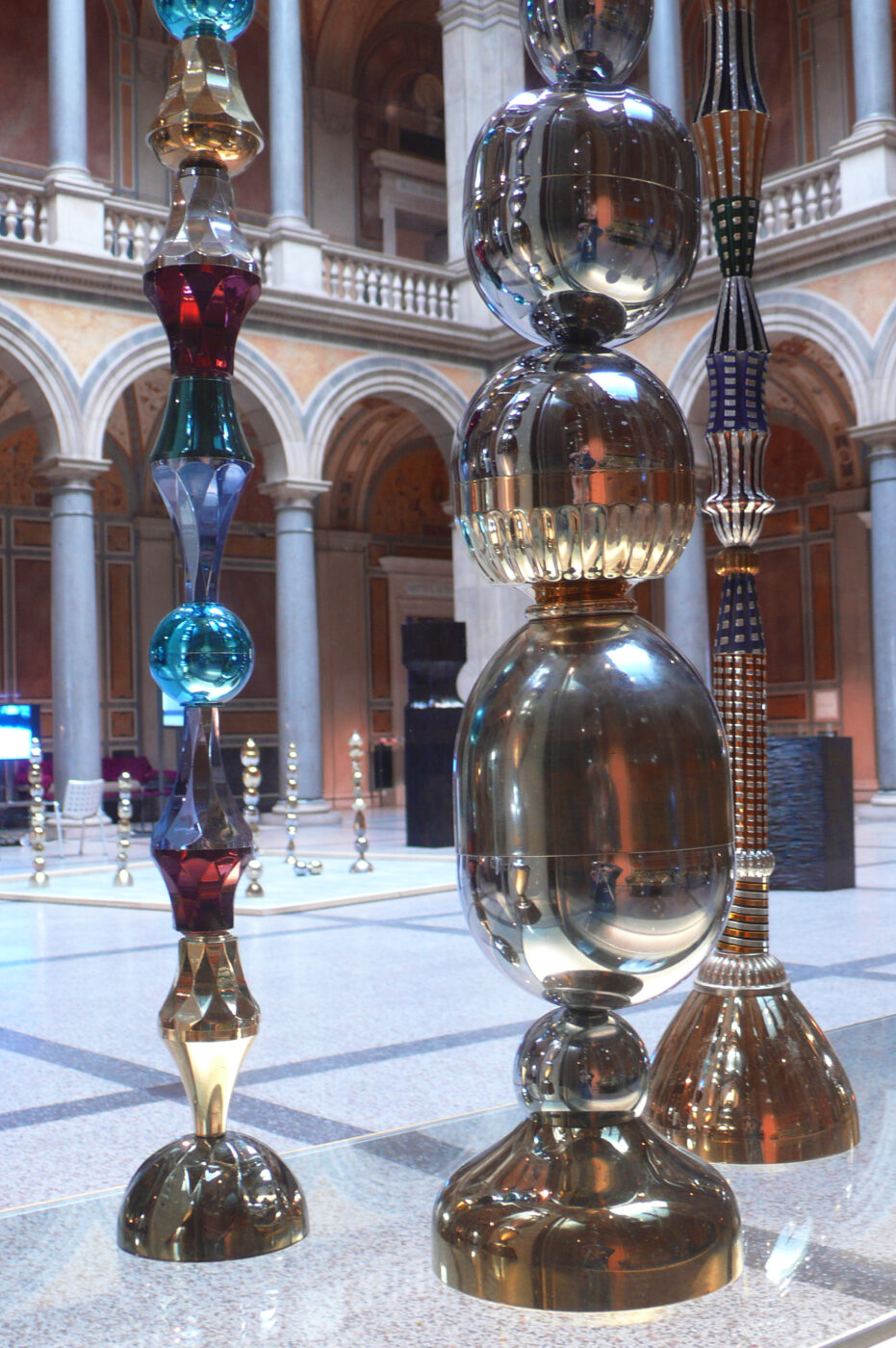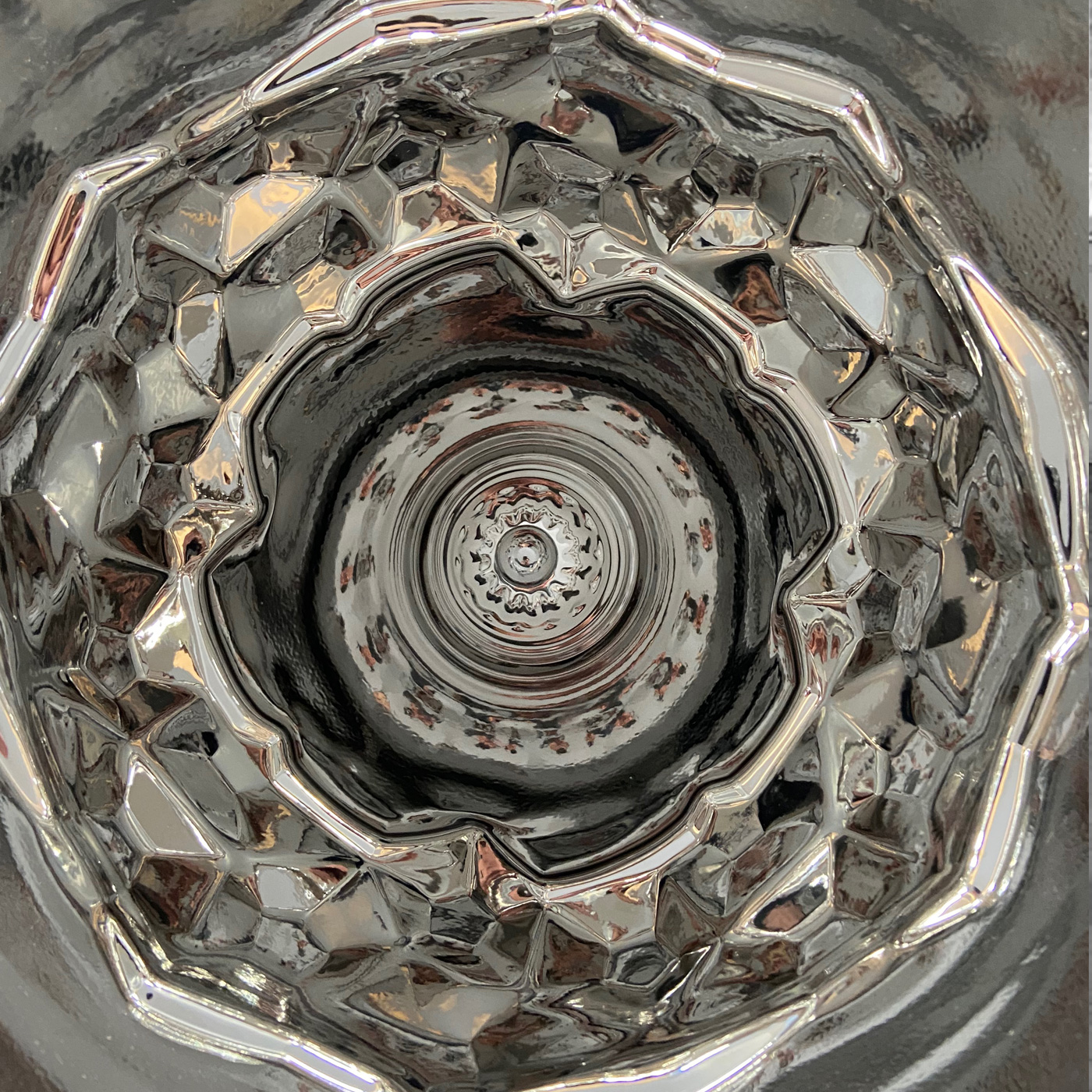„Of Trophies and Cups“
by Sebastian Hackenschmid
excerpt from the Book „Brutiful“
ISBN-10 : 3851193601

„Of Trophies and Cups“
by Sebastian Hackenschmid
excerpt from the Book „Brutiful“
ISBN-10 : 3851193601
Patrick Rampelotto finds the raw “material” for his sculptures in those ubiquitous and uniform standard cups — awarded for amateur skiing races and local chess tournaments as also for the inevitable beauty contests, pet breeder shows, comedy festivals and ideas competitions. […] Discarded trophies that have turned into junk after having been sorted out and thrown aside in hobby basements and teenager bedrooms, from living room display cabinets and bar room presentation stands. […]
In a kind of recycling act Rampelotto unscrews all the separate parts of these trophies that have undergone a dramatic degradation into rubbish and he puts them back together again in a transformation process. In the course of this the modular components consisting largely of the bases, shafts and cups – emerge as column-like sculptures in a work of craftsmanship. These are unique small-scale “triumph columns”, each possessed of an “originality” that has long fallen by the wayside in the mass produced competitive trophies market. Even if Rampelotto refers to these objects as “totems” on account of the origins and properties of the source materials and if they have a technoid-like appearance, the work of the craftsman involved can be clearly distinguished: patience, imagination and skill are required to pick out the right parts from a collection of old cups brought together by pure chance, to both find and piece together the right combinations of separate elements and – in the spirit of Constantin Brancusi – to cause these to tower up as elegant columns.

By taking apart the throwaway cups and putting them back together again in entirely new combinations Patrick Rampelotto is making a material his own, transforming it and conferring a new real existence as an object on it. The ready-made modules from which the former factory made trophies were produced can be recognised in their new context on a second look, but they no longer convey anything of the familiar and characteristic iconography of victory, with its roots in the traditional cups of the Renaissance and Baroque period as they have come down to us. What is far more the case here is that the cups are stripped completely of their symbolic function: their inherited “dignity of form” is thoroughly deconstructed by means of the recombination the basic components have experienced and directed upwards in the shape of column-Like “Totems” ad absurdum.
In contrast with his “Totems” Rampelotto has created another and far more extensive work group based on use of the same material and one which in order to freight it with a thoroughly comparable aesthetic has also been assigned a concrete function: These “useful” objects serve as lamps. Rampelotto uses the disassembled cup parts to construct small and large table lamps, standard lamps and opulent chandeliers for the ceiling, which often call to mind futuristic sea mines. This is also based on the re-use of items that have been discarded “secondary raw materials” in the parlance of the recycling business.

But while his “home-made” and practical designer objects which have now emerged as fully functional electric lamps, and for which terms such as “bricolage” or “adhoc-ism” are not altogether inappropriate to indicate the improvisation with found objects, the totems are to be spoken of rather as “sampling” or “remix” work in the sense of a new constellation of the source materials. This is because in contrast to the lamps, Rampelotto’s “totems” are dedicated to the functionless sphere of the trophies from which they emerged, which also accounts for their apparent functionality as independent works in the borderline area between art and design: In a subversively ironic – and surely also self-deprecating stance – Rampelotto designs “useless” objects, which project the lustrous appeal of the trophy among the luxurious prestige objects of the international art market.
[The language of „trophi-ism“] is the language of a culture in which individuality is mass produced industrially and standardised “assemblages of effect“? […] but also a language in which Rampelotto succeeded in formulating his own critical standpoint, in which industrially mass produced goods become comprehensible through handcrafted new or re-processing: since in a world of standardised mass commodities a manually individualised product is in fact the true trophy.






